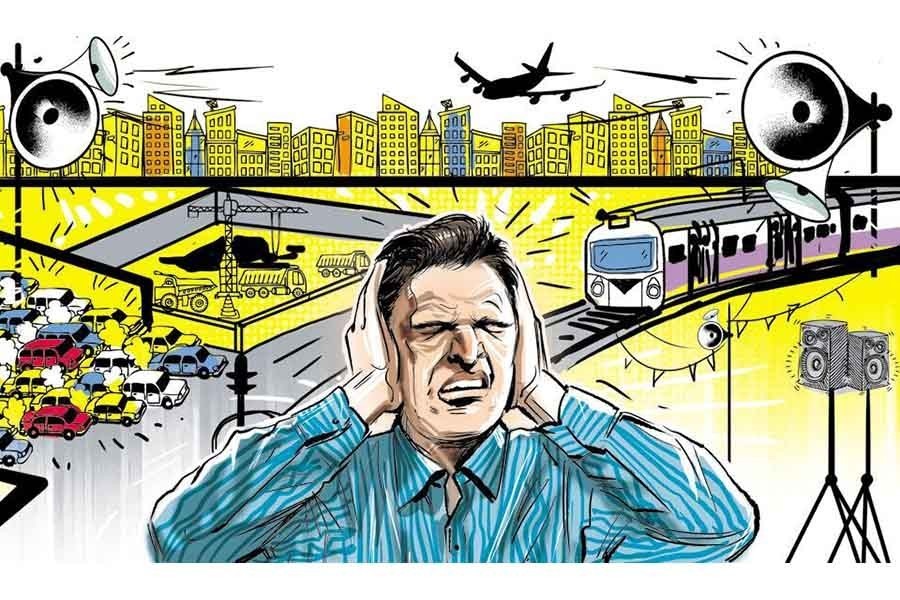According to World Health Organisation (WHO,) over 1 billion people aged 12 to 35 years risk losing their hearing due to prolonged and excessive exposure to loud music and other recreational sounds. This is a serious issue for us, considering that a United Nations Environment Programme (UNEP) survey declared Dhaka the world’s noisiest city this year.
The city doesn’t take a break at all. From morning to evening, the roads are mostly exposed to the cacophony of horns of school and office vehicles. The way things are going, it is only a matter of time before the hearing loss becomes the next pandemic.
The nights are restless for the trucks and long-route transports in a similar fashion. The health impacts of noise pollution are believed to be the second highest after air pollution. It has been identified as a major cause of ailments such as deafness, insomnia, heart disease, poor attention, high blood pressure, etc.
65 per cent of traffic police officers patrolling the city's streets in Dhaka are experiencing hearing and sleep issues due to the city's excessive noise levels. In 2017, around 12 per cent of the population in Bangladesh lost their hearing due to noise pollution. These are data found by research and survey conducted by Bangabandhu Sheikh Mujib Medical University and the Department of Environment, respectively.
Another analysis published by the National Library of Medicine found that females were likelier to have noise-related health concerns.
Additionally, younger people may be more exposed to noise. Their pattern of sleep is changed, and their attitude becomes rough. This can have a disastrous impact on their physical and emotional health, as well as their education.
Interestingly, these vehicles are not the sole destroyer of our eardrums. We have our contribution in this regard. Excessive loud sound doesn’t mean noisy horns only. The prolonged use of high-volume earphones can also do great damage.
With cell phones and keys, earphones are the most found items in people’s wallets or handbags. Many can’t even imagine leaving for work without earphones or earbuds. But most of us are unaware of many health concerns related to them.
Sound is measured in decibels (dB). According to Centres for Disease Control and Prevention, Sounds at or below 70 dB are considered safe. Yet the majority of headphones can top 100 decibels (dB), which can damage hearing permanently in just minutes.
Temporary hearing loss or tinnitus is brought on by loud noise exposure. But repeated or extended exposure can harm the ears permanently and cause irreversible hearing loss. Headphones, like other loud noises, harm human ears, resulting in what audiologists call 'noise-induced hearing loss.'
However, headphones do not have to be excessively loud to cause hearing damage. A blog published by Oklahoma Hearing Center explains that even moderately loud headphones or earbuds might harm your hearing over time. This is because our ears are damaged not only by the volume of the noise but also by the period of exposure.
Going to a concert or using noisy power tools can cause the same damage to your ears as a much louder gunshot or explosion. The time of exposure is equally as important as the volume.
WHO estimates that 430 million people worldwide are currently hearing impaired, and this number could soon double if action is not taken to prevent loud noise.
Bangladesh’s Department of Environment issued several laws and guidelines regarding this. But the reluctance to execute the laws can aggravate the damages in the future.
Before waiting for the authority to take their steps, it is our responsibility to take care of our hearing while listening to personal devices.
It is possible to protect our hearing for life by setting headphones or earbuds to no more than 50 to 60 per cent of the maximum.


